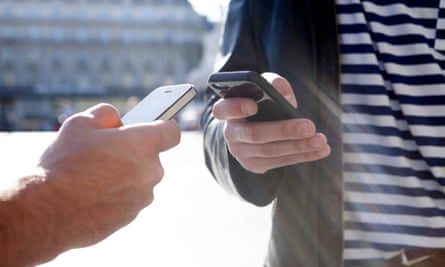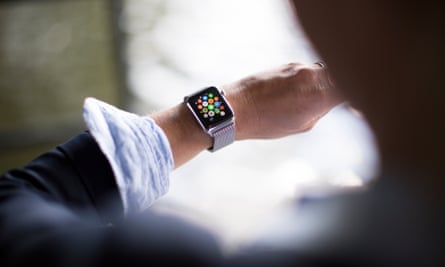A prescient episode of The Simpsons (season 12, episode 14) referred to advertising as a three-pronged attack – subliminal, where the message was hidden; liminal, which was conventional advertising; and superliminal, which was shouting the message at random people in the street.
Today, some companies choose to take the superliminal concept further by effectively shouting at us via SMS. If your number gets onto an advertiser’s list, you are on the receiving end of a relentless stream of calls and texts. Many of these do not involve other people, since the calls are generated by automated software and if you pick up, you hear a recorded message.
The Salesforce 2015 State of Marketing report found that 46% of marketers are using some form of mobile marketing (SMS, push notifications, mobile apps) this year, compared with 23% in 2014. Two of the five key areas where marketers plan to spend money in 2015 are location-based mobile tracking and mobile applications. Although marketing automation fell off the top-five list in 2015, it is still a major item of expenditure among UK marketers. Mobile loyalty campaigns are the most popular mobile marketing activity while SMS promotions rank third and fourth.
Are robots wasting our limited human time?
You can’t just switch off your phone as you risk missing calls and texts that you want to receive. However, you can screen calls and texts, cancel unwanted push notifications and alerts, set different ringtones for people you want to hear from, opt out of receiving mass texts, register with the TPS (telephone preference service) and other “do not contact” lists, although that does not stop calls from anonymous numbers. But all this takes time. So, are robots wasting our limited human time?
The rules
SMS marketing is covered by the Data Protection Act and the Privacy and Electronic Communications Regulations. The Information Commissioner’s Office (ICO) has a checklist of the rules surrounding electronic marketing. Organisations are required by law to obtain individuals’ specific consent before sending them direct marketing by any electronic means or sharing their contact details with third-party organisations.
However, as is illustrated by a recent news story, you only have to forget to tick a box once to be inundated with calls and texts promoting products, services and charitable donations.
The business case
The obvious business benefit of SMS is its immediacy. According to Fever, 90% of marketing text messages are read within just three seconds of being received.
This is supported by statistics from Textmarketer’s website, including a quote from Frost & Sullivan research that 98% of all texts get read. An infographic on the site states that 71% of British consumers own a smartphone (Google) and 96% of UK adults go online via a mobile (Office for National Statistics).
People use smartphones to search for and purchase products and services. Furthermore, smartphones enable advertisers to access data about their customers, such as location and purchase history, and to interact directly with them to provide information and offer deals that may drive sales.
Textmarketer’s clients include retailers that have experienced an uptick in sales following SMS special offers sent to recent customers informing them of seasonal sales, for example.
However, many SMS marketing campaigns target potential rather than existing customers and here the outcome seems less convincing, although advertisers remain optimistic.
In a recent article for Forbes, Christine Moorman, director of the CMO survey, highlighted findings that showed spending on mobile marketing was set to increase 160% over the next three years, notwithstanding questions around performance.
The survey found that mobile marketing campaigns have had surprisingly limited success. When respondents were asked to rate the performance of their company’s mobile marketing activities on a scale from one to seven, where one equals poor and seven equals excellent, only customer engagement scored above the halfway mark; delivering a brand message, customer acquisition, customer retention, sales and profits all fell below average.

Mark Brill, a mobile strategist and senior lecturer in future media at Birmingham City University, has advised brands on SMS marketing campaigns. “Mobile is different from any other platform because it is unique and intensely personal,” he says. “People don’t share phones and we use them to communicate with family and friends – which is why we read SMS messages, while emails are increasingly filtered.”
The fact that SMS is personal and immediate means that it is the best way for brands to engage. As the CMO survey findings indicate, however, it is easy to get SMS marketing wrong. “SMS marketing is contextual and the business case is not always thought out as carefully as it should be,” says Brill.
The critical success factors are frequency and timing. “If SMSs are sent too often or at inappropriate times, they become irritating and opt-out rates increase,” Brill adds. “When you get it right you get a much higher response rate than email, where the opening rates are under 20%, but if you get it wrong people are much quicker to get annoyed.”
Notifications too need to be contextual. As Brill explains, service-driven SMS can work well. For instance, SMS reminders to young diabetics to take their insulin on time considerably reduced instances of hyperglycaemia and produced significant cost reductions for the NHS. “But if reminders are too frequent, people stop listening and become annoyed.”
Wearable notifications: unmissable or unbearable?
Wearable technology is already proving effective in the healthcare space, for example, linking asthma inhaler usage with air quality reports to send users alerts.
The growing popularity of mainstream wearables such as the Apple Watch, which collect detailed user data, will no doubt trigger an explosion of notifications and offers. But wearables also bring new challenges. As well as focusing on context, timing and frequency, marketers will need to create glanceable notifications, ie getting the message across and prompting the desired reaction within a few seconds.
Wearables are also likely to intensify people’s reaction. As Rick Delgado has observed, the best-case scenario is that effective, well targeted notifications could become so useful that they incentivise people to purchase wearables. Conversely, the intrusive nature of haptic alerts might make unwanted or frequent notifications even more annoying.

Interrupted – but are consumers becoming i-mindful?
According to Deloitte’s 2015 UK Mobile Consumer survey, collectively UK consumers look at their smartphones more than a billion times a day. But although society has become distracted, we are increasingly checking our phones unprompted, either to see whether we have any messages or to look for information. We are choosing when to be distracted. Deloitte found that most people check their phones while travelling on public transport, at work and while watching television.
Perhaps this goes some way to explaining the disconnect between automated marketing processes and their time-poor human (customer) targets.
Although notifications and alerts encourage us to check our phones even more than we do already, most people’s commitments require some uninterrupted focus. Consequently, the constant stream of messages is forcing us to consider our own attention management. There are apps that temporarily block interruptions and even furniture, such as Agata Nowak’s Offline Chair, which physically disconnects you from the digital world.
We are learning to prioritise and filter out alerts and notifications that do not require immediate attention, and there are apps around consolidation and OS-level mindfulness. The logical outcome is that if mobile marketing is not timely and relevant, it will go the way of email spam, which is declining because we have learned to filter it out. As Tom Goodwin of Havas Media said, advertising thinking will need to change in “the post-attention age”.
Joanna Goodman is a writer and editor. Follow her on Twitter @JoannaMG22
To get weekly news analysis, job alerts and event notifications direct to your inbox, sign up free for Media & Tech Network membership.
All Guardian Media & Tech Network content is editorially independent except for pieces labelled “Brought to you by” – find out more here.

Comments (…)
Sign in or create your Guardian account to join the discussion